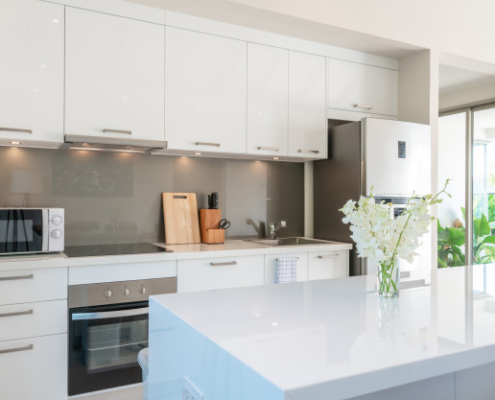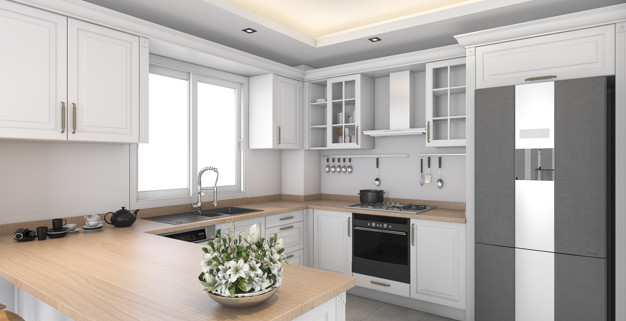How to choose kitchen gadgets and equipment
Whether you’re buying equipment for your brand-new kitchen, or are looking to upgrade your existing one, there are few things more enjoyable than buying new kitchen gadgets and equipment. Adding new tools to your setup can make cooking both easier and more rewarding for you and your family.
But with so many kinds of kitchen gadgets out there these days (such as the popular air fryer), you may be at a loss for what to get. Not to worry though – we’ve prepared a few tips to make the selection process easier. You won’t be spending any unnecessary money on flavor-of-the-month kitchen equipment on our watch.
With that being said, here are some of the most important things to keep a note of when choosing your future kitchen appliances.
Make a list of things you need

The first and most obvious problem is that you may forget what you were supposed to get. Even if you were planning out your shopping list for hours the day before, it’s easy for an item or two to slip past your memory, especially if it’s a long list. This can end up with you having to go on more than one trip to the store, which can be a real hassle.
Another problem with using mental notes is that it doesn’t solidify your purchases. Without writing down a list of what to get, you don’t feel like you’ve confirmed what you’re buying. This can end up with you purchasing gadgets you don’t need on the fly because you feel like you could just add it to your mental list.
Aside from avoiding these problems, making a list of what to get also helps you pinpoint exactly what your kitchen needs. Not much of a baker? You can hold off the oven purchase for a later date. Need instant cooking solutions? Better get a microwave. With a list, you can easily figure out what you need in your kitchen.
When making the list, don’t just list equipment right away. You should first list down what you want to do with your kitchen. For example, you could note that you want to be able to bake, make ice cream, and roast meat. In the same manner, list what you DON’T need. You could write down that you don’t plan on cooking rice at home.
With these written down, you can then begin to figure out what you need and don’t need. In the example above, you’d probably list down an ice cream machine and oven, and avoid purchasing a rice cooker. As you can see, by identifying what your kitchen needs, you can easily figure out the relevant equipment.
Will your equipment fit, considering your space
The next factor to consider is your equipment’s fit. Sure, you may have the money to buy a large oven and stove, but it wouldn’t matter much if you can’t fit it. Remember that your kitchen can only hold so much equipment at once, and plan accordingly.
For starters, it’s probably a good idea to measure up your kitchen. This is especially important for large kitchen appliances, such as dishwashing machines. Also, take into consideration all the doorways nearby, and remember to leave enough space for people to walk through where they might need to. Aside from this, you’ll also want to remember that your cabinets can hold some of your kitchen equipment. Depending on your cabinet size, you could either fit an entire air fryer or just a set of measuring cups inside. If you have a bit of extra space in your kitchen to work with, consider cabinet installs. You’ll want to install kitchen cabinets if you have more kitchen equipment than what can fit on your countertop.
Don’t forget about safety
So, you’ve managed to maximize every inch of your kitchen and you’ve filled it to the brim with all sorts of trinkets. But is it safe? Many people forget that the kitchen is home to some of the most dangerous equipment in the house, including high-voltage equipment and sharp tools such as knives. One mistake can lead to some serious consequences, and you’ll and to make sure that never happens.
When it comes to kitchen appliances, be sure to have all your kitchen appliances connected to wall outlets. It can be tempting to use extension cords, but this can risk damage to your appliances, or worse. If you can’t bring your appliances to a wall outlet, consider having a wall outlet installed to where your appliances are instead. It’ll cost a little bit of money, but it’s well worth the added safety that it brings.
You’ll also want to keep all sharp equipment and electric appliances out of reach from both pets and children. If left unsupervised, they may end up damaging your appliances or hurting themselves.
There are a few ways to accomplish this: for starters, keep all sharp objects safely stored in cabinets that are out of reach from children and pets. It’s also important to remember that some kids and pets are quite crafty, and will look for ways to reach the cabinets. Try keeping objects such as chairs away from the cabinets to prevent them from reaching them.
Be sure to also disconnect any appliances when not in use. It’s easy to overlook, but leaving appliances connected, despite not being in use, can still pose a risk to your home. You don’t want to take any chances, so try forming the habit as soon as possible if you haven’t already.
Choose energy-efficient equipment

With that being said, energy-efficient kitchen gadgets and equipment often come at a cost – a heavy upfront cost, that is. You’ll find that many electric appliances and energy-saving equipment cost a little more than their conventional counterparts. These cost differences can add up if you’re buying many pieces of equipment at once. If you can’t afford them, try prioritizing equipment you know you’ll be using often so you make the most out of the cheaper energy usage.
Finally, don’t fall victim to the many energy-efficient products you may come across. Often, the “energy-efficient” term is used as a buzzword to lure in customers. And while they may definitely save up on energy usage, they might not perform nearly as well as your average equipment. So, if you’re sure you want to invest in more energy-efficient alternatives, remember to pick equipment you know is of good quality. They’ll last longer and perform a lot better than products that may be cheaper.
Budget for your kitchen gadgets and equipment
You probably know this by now, but kitchen equipment and gadgets aren’t exactly the cheapest things in the world. They’re a heavy investment, and unless you’re going to be using the equipment often, you may end up with rarely used gadgets in your cabinets. To prevent this from happening, you should keep your spending to a minimum and plan ahead with your budget.
Remember the list we talked about earlier? If you’re a little tight on cash, here’s a quick tip to easily figure out what to buy. Arrange all the items on your list, with the most important equipment on top and the least important ones at the bottom. Then, write down all the prices of the kitchen gadgets and equipment beside them, and add their costs one by one, beginning with the top item. Stop when you’ve reached your maximum budget, and you have your final list of to-buy equipment.
Remember to prioritize the essentials first, such as a stove or microwave. Think of what you definitely can’t live without, and start from there. If you’re buying many of an item (such as plates or cups), limit the amount to the number of people in the household, plus one or two extra for guests. Don’t worry if you couldn’t get all the items you wanted at once. You can always go back to the store and buy them when you have the funds to do so.
As a final tip, try to balance price and quality with every purchase. Cheaper items may hurt your wallet less, but they may not last as long or perform as well as other, more costly brands. Find what works best for you and stick to your budget, and you should be fine.
Conclusion
Kitchen equipment is essential to spice up your meals and make cooking easier and more fun. By following these tips listed above, you’ll be able to maximize your budget with the necessary equipment to bring your kitchen to life.





